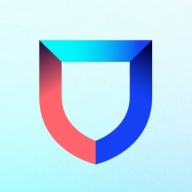


Lacework FortiCNAPP and Bridgecrew compete in cloud security. Bridgecrew holds an advantage with its feature-rich offerings despite higher pricing, while Lacework FortiCNAPP appeals to cost-conscious buyers with competitive pricing and strong customer support.
Features: Lacework FortiCNAPP offers comprehensive threat detection, compliance management, seamless integration, and automation capabilities. Bridgecrew focuses on infrastructure as code analysis and continuous security compliance monitoring, providing a developer-friendly environment.
Ease of Deployment and Customer Service:Lacework FortiCNAPP provides a simple deployment process with extensive documentation for smooth onboarding and is praised for accessible customer service. Bridgecrew offers straightforward deployment with minimal setup time, effective automation, and efficient customer support.
Pricing and ROI: Lacework FortiCNAPP is favorable for its competitive setup costs and strong ROI, appealing to budget-conscious organizations. Bridgecrew, while more expensive, offers superior security features, suitable for scenarios demanding advanced security, leading to higher investment returns.
| Product | Market Share (%) |
|---|---|
| SentinelOne Singularity Cloud Security | 3.7% |
| Lacework FortiCNAPP | 2.3% |
| Bridgecrew | 0.1% |
| Other | 93.9% |



| Company Size | Count |
|---|---|
| Small Business | 45 |
| Midsize Enterprise | 20 |
| Large Enterprise | 54 |
| Company Size | Count |
|---|---|
| Small Business | 4 |
| Midsize Enterprise | 4 |
| Large Enterprise | 3 |
SentinelOne Singularity Cloud Security offers a streamlined approach to cloud security with intuitive operation and strong integration capabilities for heightened threat detection and remediation efficiency.
Singularity Cloud Security stands out for its real-time detection and response, effectively minimizing detection and remediation timelines. Its automated remediation integrates smoothly with third-party tools enhancing operational efficiency. The comprehensive console ensures visibility and support for forensic investigations. Seamless platform integration and robust support for innovation are notable advantages. Areas for development include improved search functionality, affordability, better firewall capabilities for remote users, stable agents, comprehensive reporting, and efficient third-party integrations. Clarity in the interface, responsive support, and real-time alerting need enhancement, with a call for more automation and customization. Better scalability and cost-effective integration without compromising capabilities are desired.
What are SentinelOne Singularity Cloud Security's standout features?SentinelOne Singularity Cloud Security is deployed in industries needing robust cloud security posture management, endpoint protection, and threat hunting. Utilized frequently across AWS and Azure, it assists in monitoring, threat detection, and maintaining compliance in diverse environments while providing real-time alerts and recommendations for proactive threat management.
Bridgecrew is a comprehensive cloud security platform that helps organizations automate security and compliance across their cloud infrastructure. With its powerful capabilities, Bridgecrew enables teams to identify and remediate security issues in real-time, ensuring a secure and compliant cloud environment.
One of Bridgecrew's key features is its ability to continuously scan cloud infrastructure for misconfigurations, vulnerabilities, and compliance violations. It provides a centralized dashboard that displays the security posture of the entire cloud environment, allowing teams to quickly identify and prioritize security issues.
Bridgecrew also offers automated remediation capabilities, allowing teams to fix security issues with just a few clicks. It provides step-by-step instructions on how to remediate each issue, making it easy for even non-security experts to address vulnerabilities and misconfigurations.
Another notable feature of Bridgecrew is its integration with popular DevOps tools like GitHub, GitLab, and Jira. This allows teams to seamlessly incorporate security into their existing workflows, enabling them to catch and fix security issues early in the development process.
Bridgecrew also provides detailed reports and compliance documentation, making it easier for organizations to demonstrate their adherence to industry standards and regulations. It also offers continuous monitoring and alerting, ensuring that any new security issues are promptly detected and addressed.
Bridgecrew is a powerful cloud security platform that automates security and compliance across cloud infrastructure. With its continuous scanning, automated remediation, and integration capabilities, Bridgecrew helps organizations maintain a secure and compliant cloud environment.
Lacework FortiCNAPP provides robust cloud security, combining vulnerability management and multi-cloud insight with user-friendly controls, machine learning detection, and compliance support.
Lacework FortiCNAPP specializes in cloud security by merging machine learning anomaly detection with agent-based vulnerability management to offer detailed alerts and compliance reports. Its comprehensive approach allows continuous monitoring across AWS and Kubernetes, providing insights from an attacker's perspective. The platform offers automation and seamless Slack integration, facilitating collaborative and efficient cloud security management. Users value its ability to handle multi-cloud environments and scan IAC scripts, configurations, and compute nodes across AWS and GCP.
What are the key features?Organizations across sectors leverage Lacework FortiCNAPP for cloud security, focusing on compliance, security posture, and vulnerability management. It is widely used for monitoring AWS and Kubernetes environments, scanning IAC scripts, configurations, and securing compute nodes. It supports multi-cloud security posture management and log ingestion, enabling companies to maintain strong cloud infrastructures without dedicated security layers.
We monitor all Cloud Workload Protection Platforms (CWPP) reviews to prevent fraudulent reviews and keep review quality high. We do not post reviews by company employees or direct competitors. We validate each review for authenticity via cross-reference with LinkedIn, and personal follow-up with the reviewer when necessary.